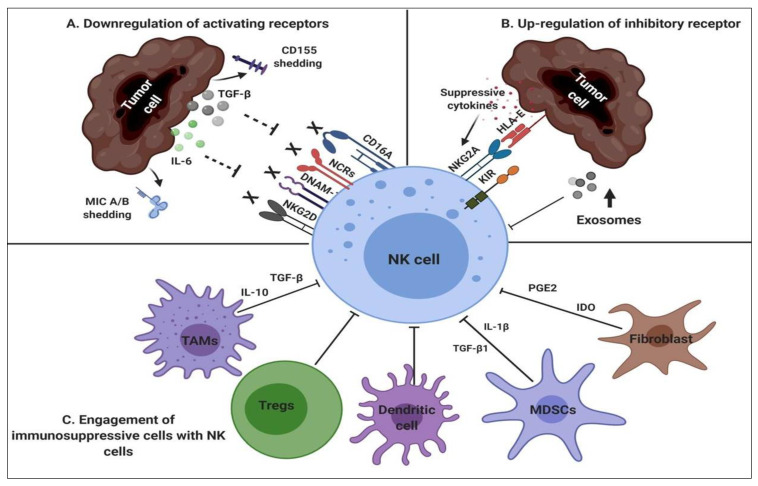Figure 1.
NK cell inhibitory mechanisms (A) Down-regulation of activating receptors on NK cells due to shedding of ligands such as CD155 or MIC A/B on tumor cells which impairs the activation of activating receptors and release of suppressive cytokines such as IL-6 and transforming growth factor-beta (TGF-ß), contribute to the formation of immunosuppressive tumor microenvironment; (B) Tumor cells up-regulate HLA-E ligand in order to escape from immune response which binds to NKG2A receptor and activate NK cell-inhibitory function and release of exosomes also blocks the NK cell activation; (C) Enrollment of immunosuppressive cells such as tumor-associated macrophages (TAMs), regulatory T cells (Tregs), Dendritic cells, myeloid derived supressor cells (MDSCs), fibroblast, suppress NK cells via suppressive cytokines.

